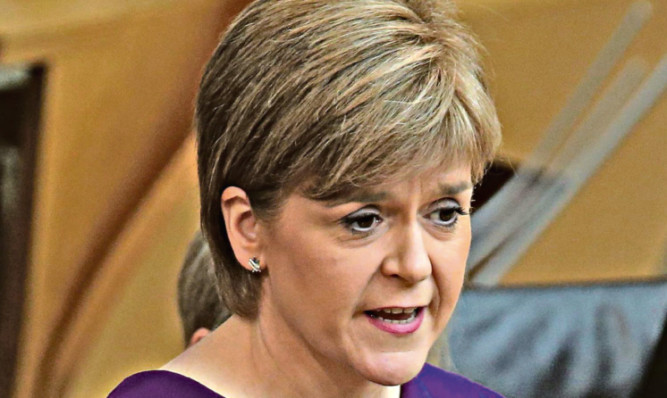
Council tenants are rushing to purchase their homes before the SNP bans the popular right-to-buy scheme.
Sales of local authority properties have more than doubled in some areas since ministers unveiled their plans, new figures show.
Nationally, 1,596 households took advantage of the policy last year up 70% from only 990 in 2012.
Right-to-buy allows tenants to get on the property ladder by snapping up their council houses for a discount.
More than two million local authority properties have been bought out under the legislation, including around 450,000 in Scotland.
The scheme was pioneered by the Thatcher government in the 1980s and First Minister Nicola Sturgeon’s parents were among those who became homeowners for the first time thanks to it.
In England, it is now being extended but, north of the Border, the SNP will ban the practice from August 2016, claiming there aren’t enough council houses for those who need them.
Last night, there were fears some tenants will plunge themselves into debt in a bid to beat the ban.
Eben Wilson, director of the campaign group Taxpayer Scotland, said: “What we seem to be seeing here is a panicked reaction by less well-off tenants who don’t want to miss out and the temptation may be to borrow beyond their means.
“As we get closer to the 2016 deadline, this rush may well turn into a frenzy.”
Across Scotland, on top of the 1,596 direct purchases from councils, a further 286 took over their ex-council stock home from a housing association (up from 183 in 2012), making a total of 1,882.
In two local authorities, the figure has more than doubled in only two years, from 25 to 60 in Renfrewshire and 17 to 38 in Moray.
Glasgow’s total climbed from 85 to 156 and Edinburgh’s 69 to 97, Aberdeen’s 100 to 177 and Dundee’s 58 to 70. Fife’s figure increased from 79 to 151.
Across both Lanarkshire councils, numbers rose from 173 to 304. Only Highland saw a drop 48, down from 51 while Orkney held at five.
Adam Lang, head of policy at the housing charity Shelter Scotland: “Right-to-buy is no longer
relevant to 21st Century Scotland.
“Affordable housing has been sold off at three times the rate we have been building new homes and some estimates suggest one in five properties sold under right-to-buy is now rented privately.
“Meanwhile, more than 150,000 households are on council waiting lists across Scotland.
“Right-to-buy has also seen the people who cannot afford to take part typically the poorest and most vulnerable moved into the least desirable properties and areas.
“It is good news that right-to-buy is ending in Scotland and we don’t see any reason for ever reintroducing it.”
However, Scottish Conservative housing spokesman Alex Johnstone said: “We predicted a surge in purchases before the deadline and that seems to be what we are seeing.
“It is perhaps ironic the SNP’s aversion to home ownership has encouraged more people to exercise their right-to-buy and achieve their aspirations.
“The move to end it is nothing more than a political dogma and has nothing to do with protecting the housing stock.”
A spokesman for the Scottish Government said housing is a key priority.
He said: “We are investing over £1.7 billion to deliver our target of 30,000 affordable homes during the lifetime of this parliament.
“Working with local authorities, we are building record numbers of council houses.
“By ending right-to-buy next year, we will protect up to 15,500 social houses from sale over a ten-year period and safeguard social housing stock for future generations.”
In my view By Mary Taylor Chief Executive of the Scottish Federation of Housing Associations
The SFHA welcomes the plan to abolish the right-to-buy policy in Scotland.
There are a number of reasons it had to go.
Firstly, there is an acute shortage of affordable rented homes, with social landlords struggling to build enough homes to replace the homes lost through right-to-buy.
Homes were heavily discounted, so there was not enough income to build replacement homes.
The policy was also detrimental to property standards.
Many tenants have struggled to meet the maintenance responsibilities that go along with home ownership.
Right-to-buy was also beneficial to a relatively small number of individuals, but clearly a loss to the greater public good.
Half a million social rented homes have been lost in the 30 years of this policy in Scotland, very often the better stock in the more popular areas.
While the Government’s plans to extend right-to-buy to housing association tenants in England will not affect Scotland, we will support our sister organisation, the National Housing Federation, in opposing this.
News report by Mark Howarth and Graham McKendry

Enjoy the convenience of having The Sunday Post delivered as a digital ePaper straight to your smartphone, tablet or computer.
Subscribe for only £5.49 a month and enjoy all the benefits of the printed paper as a digital replica.
Subscribe